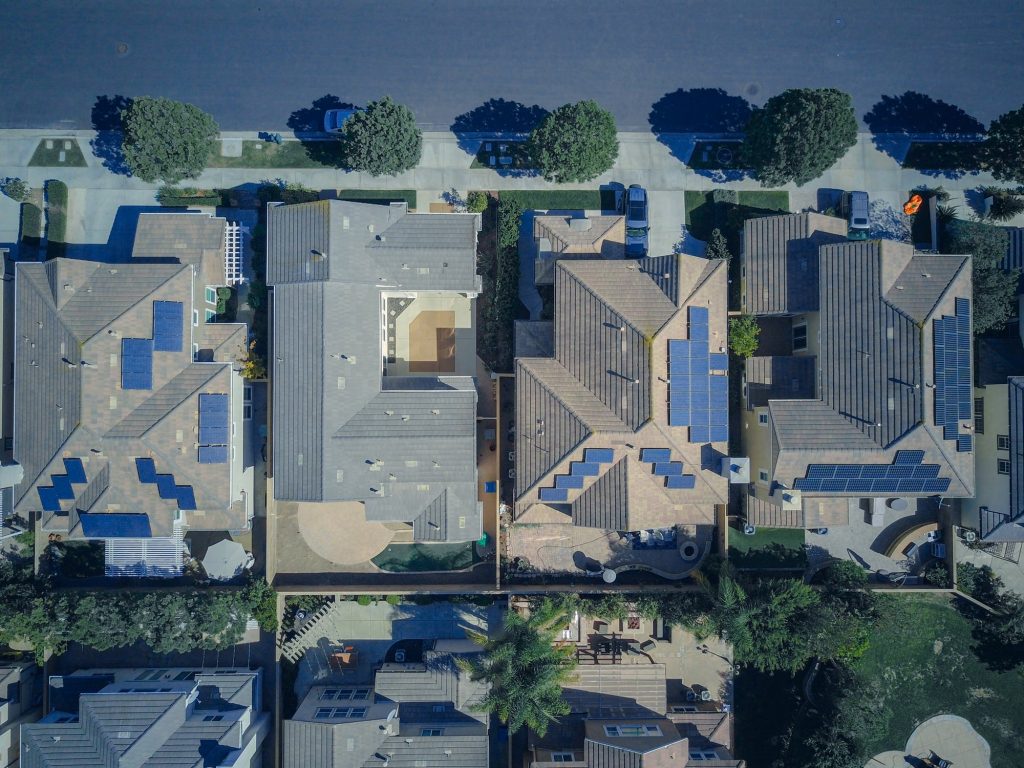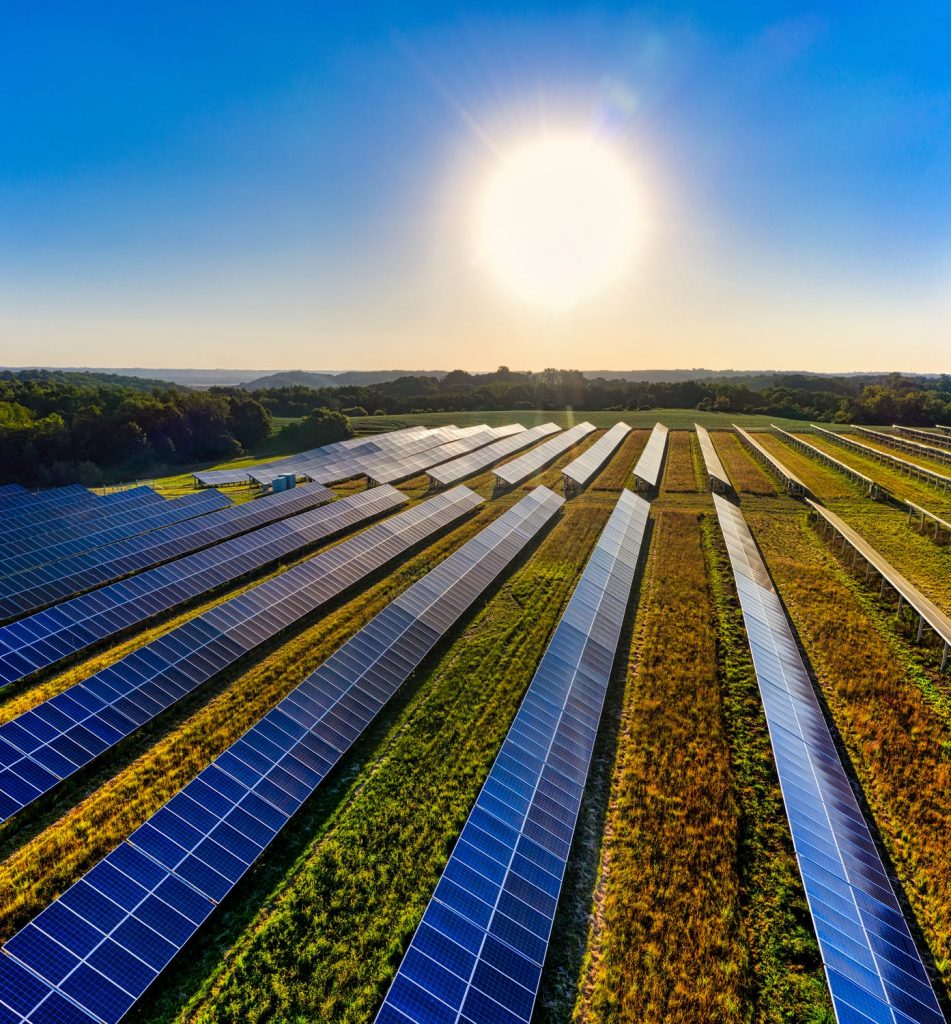What Does it Mean to Decarbonise?
Simply put, decarbonisation is the reduction of carbon – zero-carbon. We live in a time where the world is in dire need of economic change, and one of the ways to do that is through minimising our reliance on fossil fuels and making a radical switch to clean energy sources. The long-term goal is to become a climate-resilient, zero-carbon global economy. Among the many methods to support this, large scale solar power is one of them.
Why Do We Need to Decarbonise?
A major cause of cumulative CO₂ emissions is burning fossil fuels for energy. We know by now that this has led to an increased output of greenhouse gases and, over time, resulted in global warming. The rise in CO₂ output from human activity has negatively impacted our global economy and, in efforts to save our future, nations around the world have pledged to make greener choices to meet global temperature standards set by the Paris Agreement.
The Intergovernmental Panel on Climate Change (IPCC) has declared that a move to a complete carbon-zero network of the energy sector by 2050 is non-negotiable to meet the target of capping global temperature rise at 1.5°C.
How Do We Achieve Low-Carbon?
Since the announcement of the climate emergency, there has been the worldwide implementation of renewable energy like wind, solar and nuclear power and bioenergy. Decarbonised electricity can be used for the same uses as fossil fuels, for example, boilers for building heating.
The UK has the ambition to be powered by affordable, clean energy by 2035. Plans include deploying a new generation of home-grown green technologies, including solar – which remains the third-largest renewable energy technology.
What is Solar Power?
Solar power is the energy ‘captured’ from the sun that is used to generate electricity. As more and more people strive to become energy-efficient and reduce their energy costs, solar has become a widespread option. Its increase in affordability and ease of use has made it a popular choice amongst UK households. What’s more, depending on your energy supplier, you can even receive payments for extra energy you generate.

How do Solar Panels Work?
Solar panels convert sunlight into electrical energy through photovoltaic (PV) panels. When light shines on the semi-conductive material, a direct current of electricity is created and passes through the system to eventually get usable energy to electrify your home. The PV panels react to visible light – so as long as it’s light enough to see, the panel can generate electricity.
Rooftop solar can create thermal energy that can be used to provide heat in your home from water heating and air heating and essentially supply households with decentralized heating. With the use of storage batteries, unused energy can be stored and used at a later time.
How is Solar Energy Used Globally?
Solar thermal energy for heating water and air in households and buildings is only one of the uses of this alternative energy source. There is growing ambition that utility-scale solar will be used for end-use electrification (e.g. vehicles, transport, water heating, etc) and production of clean fuels, like hydrogen.
The US and China are top traders in the solar market and the US has plans to transition to a zero-carbon electric grid by 2050. This type of green technology has been adopted worldwide and is deployed for small and large-scale uses.
Advantages of Large Scale Solar Power
1. Renewable
As mentioned earlier, solar panels generate electricity from visible light. Since there is daytime light in all four corners of the earth, solar power can work. However, the more sunshine there is, the more electricity will be generated – making this a great renewable option for sunnier climates. There is also the added fact that sunlight is an inexhaustible source of energy, and can be used without much consequence for future generations.
The carbon footprint is relatively small as no pollutants are released into the air. Higher demand for solar power worldwide means a reduction in the dependence on foreign oil and fossil fuels. Also, the materials usually used – silicon sheets – are recyclable, making solar power a clean alternative energy source.
2. Money-saving
The more power your solar panels would generate, the less electricity you would have to buy from the grid, therefore making this cheaper in the long run. Additionally, solar power in the UK is being financially incentivised, as households can receive payments for extra electricity generated.
3. Low maintenance
Solar panels don’t contain any loose or moving parts, so require minimal maintenance. Since the panels are usually placed at an angle on houses and buildings, rainfall slides right down them. Dirt and debris may block the panels and require you to remove them but other than that, it’s a self-sufficient system. Solar panels also have a life span of about 20-25 years, with little loss in efficiency.
4. Efficient
When transmitting energy from power stations to homes and public buildings, there is unavoidable energy loss through heating the power lines. Less energy is wasted when using the sun to produce heat or electricity, as the power comes directly from the panel connected to your building.
5. Land-use
Large scale solar parks can co-exist amongst farm animals grazing on land – this is called agrivoltaic. The simultaneous use of land benefits landowners, the environment, and animals. The photovoltaic panels can also be removed without harm to the ground.
Large scale solar can also appear as floating solar (solar panels on water) doesn’t require any land space and so can be a viable option for smaller countries.
6. Rise in ‘green’ careers
With the continuing demand for solar, there will be a proportionate rise in demand for solar power transportation and installation jobs. An example of this large scale solar power is in India, where a 250 MW concentrated solar power (CSP) project has become a source of local jobs.

Challenges in Decarbonising the Energy Sector
Sustainable development has its challenges – socially, economically and ecologically. Energy transition needs to be compatible with social aspects (household costs) as well as environmental sustainability (protecting land and climate) and economic needs (security of energy supply and prices).
- Levelised cost of energy (LCOE)
Capital costs of large scale solar deployment run high in comparison to competing fuel sources.
Moreover, ongoing maintenance costs of solar power plants may be steep, along with refinancing the loans used to build them.
- Weather-dependent
One of the main obstacles to solar power becoming a reliable green energy source is the varying intensities of solar radiation in different areas of the world. Nations on the equator receive the highest amount of solar energy, as do those with drier climates.
Most residential panels have around a 20% efficiency rate, and anything more than that will be substantially more expensive. The more efficient the panels, the more expensive it is to make.
- Land space
Large areas of land are required for macro-scale solar farms. The biggest solar grids are built in large open spaces such as deserts, so countries with less landmass, or have to compromise agricultural land, will be disadvantaged.
- Environmental impacts
The manufacturing of solar panels can result in harmful compounds, such as nitrogen trifluoride. This by-product is a highly toxic greenhouse gas, much more insidious than carbon dioxide. But as solar technology gains more accessibility and demand, manufacturers may be able to steer clear of dangerous substances.
On a global scale, large scale solar power seems to be a very valuable option – according to the three pillars of sustainability (social, economic, ecological). On reviewing the arguments, the advantages seem to outweigh the challenges in the long term. The trend of falling prices for solar power will make the transition to a solar-powered, carbon-free global economy highly achievable.

